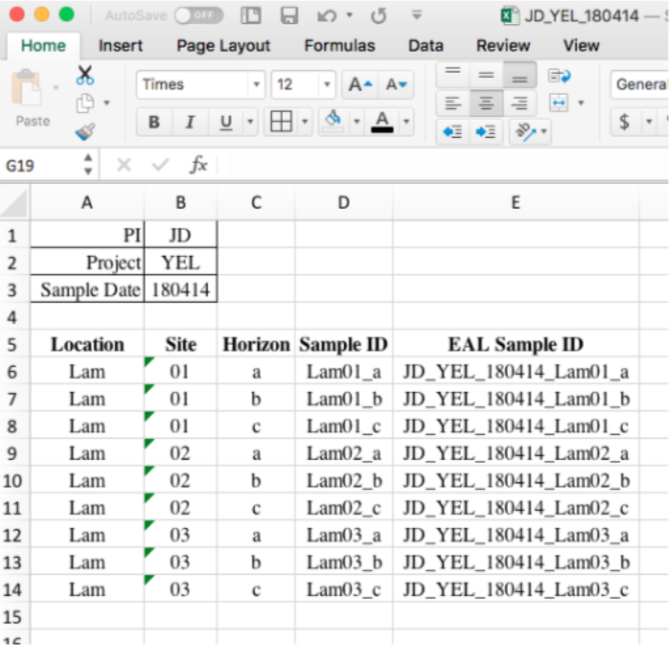EAL Sample ID
The EAL Sample ID is a labeling procedure that the EAL has developed to accurately track and analyze samples in the lab. We run ~5,000-10,000 samples in the lab each year; this procedure ensures that you receive your data and remaining samples at the end of analysis.
The EAL Sample ID must contain:
- The PI, project, and date (PI_Project_Date)
- The PI's first/last initials.
- A three or four letter project description. e.g.: If you collected precipitation samples from Post Farm, the project description could be "PFP" (post farm precipitation); If you collected samples from the Gallatin River Watershed, the project description could be "GRW". Feel free to ask if you're unsure of an adequate project description label.
- The sample date in 6 digits. e.g.: March 14, 2018 should be entered as "180314"
- Your unique identifier for each sample (sampleID)
- This should be a short, descriptive sample ID. You MUST keep the same number of characters on every ID within the same sample set, unless you are submitting a duplicate, in which case you may add a "_d" to the end of the ID.
- The entire sample ID should not be more than 20 characters including underscores. DO NOT use special characters (period, comma, paranthesis, space) other than underscores.
An example EAL Sample ID:
You work for John Doe, Ph.D.
On April 14th, 2018, you sampled 15 sites in Yellowstone National Park.
At each site, you took three samples of soil: horizons you termed "a, b, and c"
The two sites you sampled in the Lamar Valley you called "Lam01 and Lam02" You sampled three horizons at each site, so your sample IDs are "Lam01_a, Lam01_b"........"
All EAL Sample ID will start with: JD_YEL_180414 (PI_Project_Date)
The full EAL Sample IDs are: JD_YEL_180414_Lam01_a, JD_YEL_180414_Lam02_c, etc....
When filling out the sample submission form on Airtable, you are asked to provide the EAL witha list of your sample IDs. This should be an Excel spreadsheet with PI_Project_Date as the title. Your spreadsheet should give us plenty of details:

Learn to use CONCATENATE in Excel.
